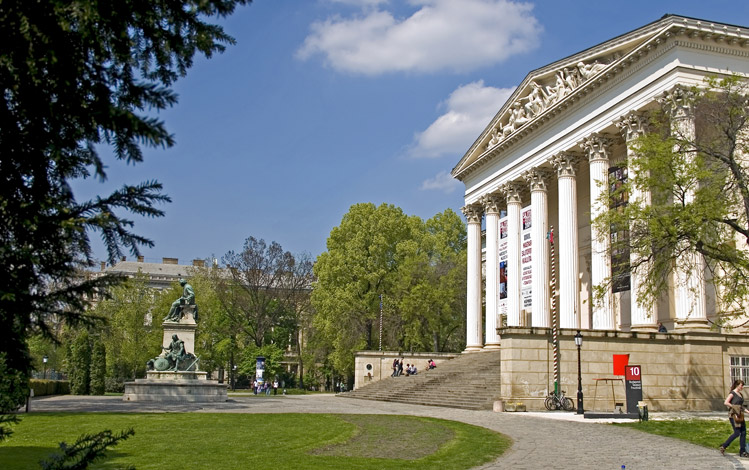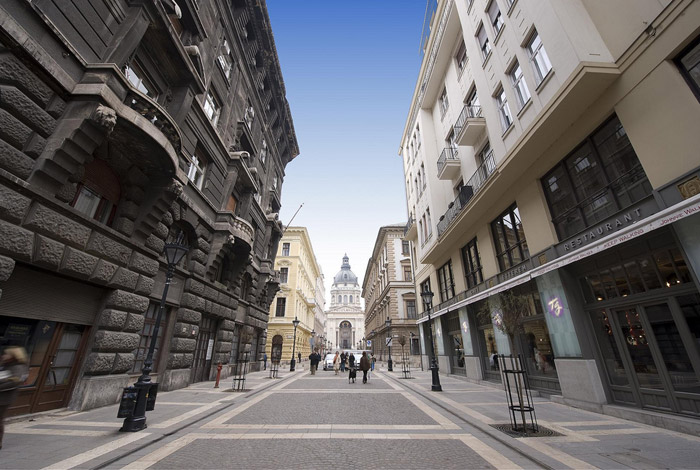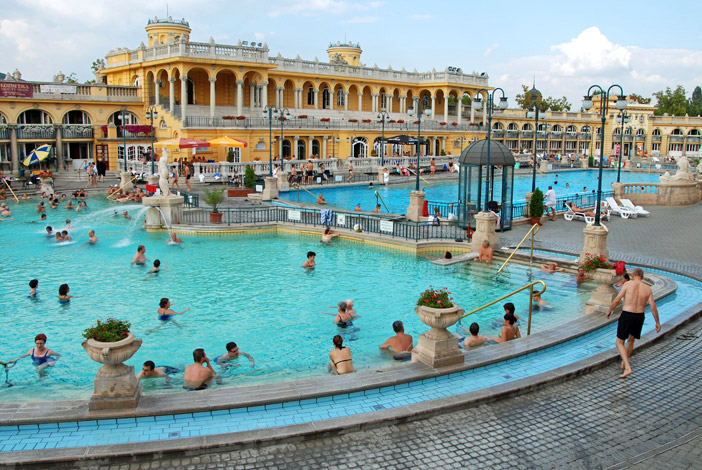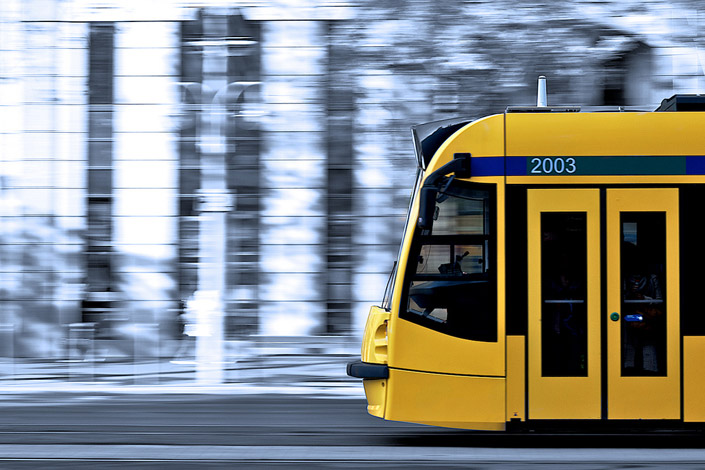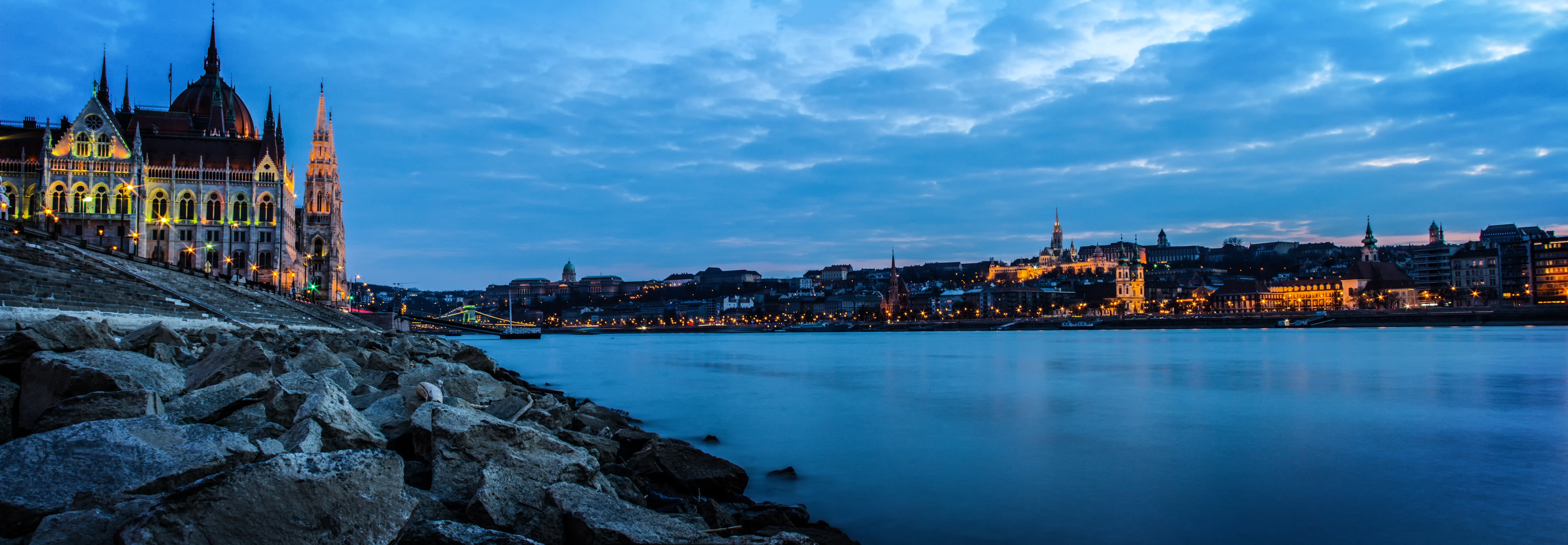
BUDAPESTRŐL
Budapest Magyarország fővárosa, egyben legnagyobb és legnépesebb városa, az Európai Unió tizedik legnépesebb városa. Budapest az ország politikai, kulturális, kereskedelmi, ipari és közlekedési központja. Emellett Pest megye székhelye is, de nem része annak. 2017-ben regisztrált lakónépessége meghaladta az 1,7 (elővárosokkal együtt pedig a 2,5) millió főt. A város lakossága 1989-ben volt a legnagyobb, az akkori lélekszám 2,1 millió fő volt, és az ezt követő szuburbanizáció után is megmaradt az ország legnépesebb városának. Területe mintegy 525 négyzetkilométer, ebben a tekintetben is első az ország települései között.
Budapest története a keltákig nyúlik vissza, mivel a város eredetileg kelta település volt. A rómaiak által létrehozott, a Danubius folyó jobb partján fekvő Aquincum és a bal parti Contra-Aquincum volt Pannonia Inferior provincia székhelye. A magyarok a 9. században érkeztek erre a területre. Az első általuk létrehozott települést a mongolok 1241 és 1242 között, a tatárjárás során teljesen kifosztották és elpusztították. A 15. században a helyreállított város lett a magyarországi reneszánsz humanizmus központja. Ezt követően százötven évnyi török hódoltság lett a sorsa, és csak a 18-19. században tudott újra fejlődni, ezt fokozta, hogy a kiegyezést követően Bécs mellett az Osztrák–Magyar Monarchia fővárosa volt. 1873-ban egyesítették Budát, Pestet és Óbudát, ekkor jött létre Budapest. Ebben az időben épültek a város leghíresebb épületei, és ekkor nőtte ki magát világvárossá.
Budapest kedvelt idegenforgalmi célpont is, 2012-ben 4 821 600 turista kereste fel, ezzel az Euromonitor International felmérése szerint a világ 27. és Európa 7. leglátogatottabb városa. Budapesten több világörökségi helyszín is található, többek között a Duna-part látképe, a Budai Várnegyed, az Andrássy út, a Hősök tere és a Millenniumi Földalatti Vasút, amely a második legrégebbi a világon a londoni után. Turisztikailag jelentősek még a város Duna-hídjai, valamint gyógyfürdői, mivel Budapest a világ legtöbb gyógyfürdővel rendelkező fővárosa. Itt található még a világ legnagyobb termálvizes barlangrendszere, Európa legnagyobb zsinagógája (a Dohány utcai), valamint a magyar Országház is, amely a világ harmadik legnagyobb parlamenti épülete, és a Szent Korona jelenlegi otthona.
Budapest Közép-Európa egyik pénzügyi központja és a világ 100. legnagyobb GDP-jét termelő városa. Az amerikai Forbes magazin szerint Budapest a 7. „legidillibb európai város”. A UCityGuides a világ 9. legszebb városának sorolja.[10] A befolyásos amerikai Condé Nast Traveler utazási magazin által megkérdezett 1,3 millió személy véleménye alapján „Budapest a világ második legjobb városa”. A magyar főváros továbbá egyike Európa 10 legkedveltebb bevásárlóvárosának az Economist magazin kutatásai szerint, ugyanis itt található Közép- és Kelet-Európa legtöbb bevásárlóközpontja.
TÖRTÉNETE
A mai Budapest területének írásos történelme a római helyőrséggel, Aquincummal kezdődik, amelyet i. sz. 89 körül alapítottak a Duna nyugati partján (a mai Óbuda területén).
Anonymus leírása szerint a honfoglalás után Árpád vezér Budavárat, a hajdani „Attila király városát” választotta törzse szálláshelyéül, központi földrajzi fekvése miatt, és itt is temették el 907-ben, a szomszédos Fehéregyházban.
Óbuda és Pest római öröksége, a sok ezer épület romja évszázadokon át látható volt, az Árpád-korban azonban a helyükön fokozatosan igazi, nyüzsgő középkori városok épültek.
A 15. század második felében, Mátyás király alatt Buda az ország fővárosa lett, reneszánsz királyi palotája európai hírű volt. Ugyanakkor a Duna bal partján fekvő Pest is jelentős kereskedővárossá fejlődött. 1541-ben a törökök kezére jutott a két város, akik 150 éves uralmuk alatt Budán rendezték be központjukat. A város arculatát a keleti városeszményhez igazították, fürdők, bazárok, dzsámik épültek. Budát és Pestet a Habsburgok véres háborúban foglalták vissza a töröktől 1686-ban, amelynek során a két város teljesen elpusztult.
A 18. századi barokk korban a városi élet csak lassan bontakozott ki újra. Buda újkori fejlődését Mária Terézia alapozta meg, amikor Pozsonyból ide költöztette a királyi intézményeket és Nagyszombatból az egyetemet. Az igazi fejlődés azonban csak a 19. század első felében, a reformkor idején indult meg, amikor Pest az ország kulturális és gazdasági központja lett. A korszak jelképeként megépült a két várost összekötő Széchenyi lánchíd.
Az 1848. március 15-i pesti forradalom a magyar történelem egyik fő eseménye volt, ez a nap ma nemzeti ünnep. Az 1848-as forradalmi események során Pest-Buda az ország fővárosa lett, majd harcok után osztrák kézre került. A magyar honvédsereg Buda 1849-es bevételével a szabadságharc egyik legnagyobb katonai sikerét érte el.
A szabadságharc bukását követő osztrák elnyomás egy időre megakasztotta a fejlődést, az 1867-es kiegyezést követően azonban világvárosi növekedés kezdődött. A vezetők 1872 decemberében fogadták el Pest, Buda és Óbuda egyesítését, majd a mai Budapest 1873 őszén jött létre. A főváros napját az egyesítés emlékére november 17-én ünnepelik, ugyanis 1873-ban ezen a napon ült össze az egyesített város tanácsa átvéve az elődvárosok tanácsától az ügyek. Budapest Európa leggyorsabban növekvő városa lett, a lakosság húsz év alatt megduplázódva a századfordulóra közel háromnegyedmilliósra duzzadt. Ekkor alakult ki a mai város képe, a hidakkal, körutakkal, modern közlekedési hálózattal, Európa első Nagy-Britannián kívüli földalatti vasútjával, a belső és külső kerületekkel, az Országházzal és a többi országos középülettel. Világhírűek lettek Budapest színházai, kávéházai, gyógyfürdői, a pezsgő kulturális élet, és a híres „pesti éjszaka”. A fejlődés jelképeként tartották meg 1896-ban a millenáris kiállítást és ünnepségeket.
A 20. század elején folytatódott a kiegyezés után lendületet kapó fejlődés, például 1909 és 1910 között bevezették az elektromos közvilágítást. Az első világháború és az azt követő események, az 1918–1919-es őszirózsás forradalom és Tanácsköztársaság azonban megakasztották a város addigi fejlődését.
A trianoni békeszerződés után a Horthy-korszak konszolidációs politikája következett. Az elcsatolt magyarlakta területekről sokan költöztek (illetve menekültek) a fővárosba. Közülük sokan laktak pályaudvarokon, vasúti vagonokban. Így a lakosság az 1930-as évekre meghaladta az egymilliót. A tömeges lakásigény miatt megépültek az első lakótelepek, például a Wekerletelep az és az Állami lakótelep is. Szegények tömegei éltek nyomornegyedekben is (például a Mária Valéria-lakótelep).
A második világháború végén a város súlyos csapásokat szenvedett. Az 1944-es német megszállást követően a lakosság egy része a holokausztnak esett áldozatul, másik része (38 000 fő) pedig a 102 napig tartó ostrom során vesztette életét. A város épületeinek jelentős része romba dőlt, valamennyi hidat felrobbantották. Sajnálatos módon a legnagyobb károkat a város építészeti kincsekben leggazdagabb területei szenvedték: a Belváros és a Várnegyed. A károk teljes helyreállítása mind a mai napig nem fejeződött be, hol foghíjtelkek, hol lövésnyomokat viselő homlokzatok emlékeztetnek a szovjet ostrom pusztítására. Sok értékes épületet lebontottak, vagy nem a korábbi formájával egyezően, esetleg csak egyszerűbb megoldásokkal rekonstruáltak.
Az újjáépítés évei után az Országgyűlés 1949. december 20-án szavazta meg azt a törvényt, amely 1950. január 1-jével Budapesthez csatolt huszonhárom környező, addig önálló települést: hét várost és tizenhat nagyközséget, aminek révén létrejött a Nagy-Budapest. Az 1950-es években a sztálinista elnyomás nehezedett a budapestiekre, ami az 1956-os forradalom kitöréséhez vezetett, és annak utcai harcai rázták meg a várost. Az 1960-as évektől a Kádár-rendszer „puha diktatúrája” alatt élte Budapest második nagy fejlődési korszakát. 1970-ben átadták az első metróvonalat. Sorra épültek a nagy lakótelepek, és az ország minden területéről újabb százezrek özönlöttek a fővárosba, amelynek lakossága az 1980-as évekre elérte a 2,1 millió főt. Az 1989-es rendszerváltás óta a lakosság száma jelentős csökkenésnek indult, aminek oka részben a fővárosiak tömeges kiköltözése az agglomeráció településeire. A lakosságcsökkenés a 2000-es évek második fele óta megfordult.
 |
1. HOP ON-HOP OFFDuring this unique Budapest Hop on-Hop off sightseeing tour you can get on and get off the buses at any of the bus stops. Ticket is valid for 48 hours and children between 0-8 are free of charge. In the full extra package there are 2 route lines, 2×1 hour Danube boat tours, and a night tour. Above this you receive a bonus booklet with discount coupons, and for a complimentary goulash soup and 2 glasses of beer. The pink route and green routes are covering all of the main sights of Budapest, with more than 30 stops. |
 |
2. SZÉCHENYI AND GELLÉRT SPASVisiting Budapest is could not be complete without bathing in one of its world-famous thermal spring spas. We offer entrance tickets for the two most elegant thermal baths of Budapest: Széchenyi and Gellért baths. By booking your tickets in advance, you will avoid the often long time waiting in the queue in front of the bath. Fast and easy entrance through the separate help desk. |
 |
3. DINNER AND CRUSIEWe would like to invite you to see our capital in the most romantic way. The River Danube runs through the center of Budapest, creating one of the finest panoramas on the continent. Join us for a unique Budapest experience, and admire this panorama while you can enjoy a delicious buffet style dinner or lunch on the ship. Ships departs at different times during the day. For more information, please ask your reception. |
 |
4. SZENTENDRE TOUR – THE TOWN OF ARTISTSTake a refreshing break from bustling Budapest into the charmingly relaxed artists’ town of Szentendre. Take a look at the open-air exhibition of young Hungarian artists, then wander along the twisting, cobblestone alleys, bargain for souvenirs in a tiny boutique. Climb the hill for stunning views of colourful rooftops nestled around the river. Marvel at the life size marzipan sculpture of Michael Jackson in the Marzipan Museum. Be our guest for a coffee. Return by boat. |
 |
5. WALK AND TASTE – TOUR AND COOKING IN THE DOWNTOWNWould you like to see the city with a local and taste the local cuisine as well? What’s more cook the meal for yourself? On our tour, we walk in the downtown, then go up to a rooftop apartment to cook and eat a delicious Hungarian meal. It is a unique social experience at a stunning location with local guides and chef. |
 |
6.BUDAPEST BOAT PARTYDuring the 2 hour party on the boat you can admire the stunning panorama of Budapest from the Danube river with unlimited beer, wine, champagne and soft drinks. Whole time there is professional DJ with surround-sound music, and once the trip is finished we provide free entrance to the most popular clubs in Budapest. |
 |
7. PUB CRAWLPub crawls are not the nightlife version of a hiking or hop on hop off bus tour. We know that drinking and socializing is a much more personal event than hiking in the woods, or going to museums, and is an experience that can be just as edifying. Free drinks, 4 bars and a club visit with free VIP entry to the world famous ruin bars of Budapest. Tickets are available at your reception. |
 |
8. FREE WALKING TOURThese tip based tours are available for free in Budapest. They have different departure times, and meeting points for every kind of walking tours. Free Budapest walk, free communism walk and free jewish district walks are available in English and Spanish languages, and took around half a day. Join as a traveler, leave as a friend. |
 |
9. RIVERRIDE BUSWe present Budapest’s most beautiful sights on dry land and from the water. Our floating bus started its conquering journey 113 years after the „little” underground. Many people think that our greatest advantage is that we can go into the Danube. We believe it’s even more important that we can also get out of it. Before we splash into the water, we show you Budapest’s places of interest on dry land. |
 |
10. ETYEK WINE TOURThe secrets of movies and wine. Come and visit the famous Korda Filmpark with us and get all the answers to your questions about the secret world of filmmaking. Take a walk behind the scenes, pop up in a street of New York, then just walk trough the medieval Florence and find yourself in the time of history. From the film park we take you to the nearby located famous wine region of Etyek. We visit one of the cellars where you may taste and try the best wines of the region (4 types of wine, cheese and „pogácsa” included. ) |
MUSEUMS
ART GALLERY / MŰCSARNOK
District 14. Dózsa Gy. út 37. / Heroes’ Square
The largest exhibition hall of the city is located in a great classical building at Heroes’ Square. Temporary exhibitions of modern and contemporary artists. Open: Tue-Sun 10am – 6pm
MUSEUM OF APPLIED ARTS
District 9. Üllői út 33-37.l
The Art-nouveau palace of the museum itself worths a visit. The collection embraces eastern carpets, treasury of the Esterházy family, art-nouveau glass works, Zsolnay ceramics, French furniture etc. Open: Tue-Sun 10am – 6pm
VASARELY MUSEUM
District 3. Szentlélek tér 6.
Works of the French-Hungarian artist Victor Vasarely, founder of the op-art stream. Open: Tue-Sun 10am – 5pm
MUSEUM OF FINE ARTS
District 14. Dózsa Gy. út 41. / Heroes’ Square
Egyptian, Greek and Roman collections, 13th-18th century Italian, Spanish, Dutch paintings. French Impressionists and temporary exhibitions. One of the most renowned museum of Budapest. Open: Tue-Sun 10am – 5.30pm
NATIONAL MUSEUM
District 8. Múzeum krt. 14-16.
It is housed in a Classical style palace designed by Mihály Pollack. Its collection possesses over 1 million items. The exhibitions show the history of Hungary from the foundation of the state until 1990. Open: Tue-Sun 10am – 6pm
HUNGARIAN NATIONAL GALLERY
District 1. Buda Palace / Szent György tér 2.
The National Gallery is the largest public collection documenting and presenting the rise and development of the fine arts in Hungary from Medieval stone carvings to late 20th century art.
HOUSE OF TERROR MUSEUM
District 6. Andrássy út 60.
The building was used by the Nazi Party in the 1940’s and after that became the headquarter of the secret service during the communist era. Today it is a memorial museum of the victims of both dictatorships. Open: Tue-Sun 10am – 6pm
MEMENTO PARK
District 22. Balatoni út – Szabadkai utca / South Buda
A glance behind the Iron Curtain. After the change of political system the statues were removed from the streets of Budapest. Open: every day from 10am. till sunset
JEWISH MUSEUM
District 7 Dohány u. 2.
Located at the 2nd largest Synagogue of the World, the Jewish Museum introduces Jewish life and traditions and the Jewish history in Budapest.
MUSEUM OF MILITARY HISTORY
District 1. Tóth Árpád sétány 4.
The museum is located in the Buda Castle District and it introduces 1000 years of military history in the Carpathian Basin.
TRANSPORT MUSEUM
District 14. Városligeti krt. 11.
Located in the picturesque City Park, the museum offers a great program for families with children. You can have a closer look at great old vehicles.
ATTRACTIONS
BUDAPEST ZOO
The second oldest zoo in Europe offers not only rare animal and plant species, but an architectural beauty, too. The zoo is one of the key attractions of the city park, where many places of interest can be found.
MARGITSZIGET
Margaret Island is a traffic free green spot in the middle of the downtown. It is a beloved place for leisure and recreation both for locals and foreigners.
MILLENÁRIS PARK
The recently opened park is located on the Buda side, close to Moszkva tér. It hosts some important establishments, such as the House of Future and the Palace of Miracles. There is a concert hall in the park as well, making it a beloved place for young people.
PALACE OF ARTS
The Palace of Arts is the newest cultural establishment of Budapest, opened in 2005. It consists of three important institutions: the Festival Theatre, the National Concert Hall and the Ludwig Museum of Contemporary Arts.
ICE RINK AND BOATING LAKE
During winter time the biggest ice rink of the city operates here. In the summer pairs can enjoy paddling in the lake next to Vajdahunyad castle in the city park.
BATHS
SZÉCHÉNYI SPA
Address: Budapest,Állatkerti krt. 11.
Situated in the City Park, in a lush green area, the Széchenyi thermal bath is the largest bath in Europe. It was built in neo-baroque style between 1909 and 1913 and later enlarged. It consists of an in-door and an open-air part. Its water originates from the artesian springs of the City Park. The thermal water is effective in healing genealogical, dermatological problems and diseases of the nervous and digestive system.
Opening hours: Monday to Friday 6am to 10pm, Saturday to Sunday 6am to 10pm.
GELLÉRT SPA
Address: Budapest, Kelenhegyi út 2-4.
The Gellért SPA is one of the best known and most favoured among the thermal baths of Budapest. It is in the same building as Hotel Gellért, which was built in 1918 in art nouveau style. The thermal water was already used in the middle ages, and during the Turkish occupation of Hungary in the 15th century a bath house was built on this spot. In the second world war the building was badly damaged, but later it was reconstructed and modernised preserving its oriental decoration and atmosphere. Today it has a thermal bath, a swimming pool and an open-air section. The thermal water is used to cure nerve-system problems, respiratory diseases and locomotor disorders. It is definitely worth a visit because of its unique atmosphere.
Opening hours: Monday to Friday 6am to 7pm, Saturday to Sunday 6am to 5pm.
RUDAS BATH
Address: Budapest, Döbrentei tér 9.
Supplied by 21 different thermal springs, the Rudas Bath is one of the largest spas at the foot of the Buda hills. At this place there was a bath already in the 14th century, but it had a boost during the Turkish occupation in the 15-16th century. From the original building the dome is still preserved, and the bath is one of the most remarkable establisment from the Turkish era. The building has an octagonal structure and the main pool is lit through the dome by small octagonal holes.
Tub and thermal bath, sauna, dental shower and indoor swimming pool serve for those who seek for recreation, healing and comfort. Its radioactive water heals all kind of rheumatic diseases.
Opening hours: Monday to Friday 6am to 6pm, Saturday to Sunday 6am to 5pm. Please note that on Monday, Wednesday, Thursday and Friday only men can visit the bath, on Tuesdays only women can enter. Weekends are open for everyone.
KIRÁLY BATH
Address: Budapest, Fő utca 82-86.
The most interesting thing about Király bath is that it has never had its own water supply. When the Turks occupied Buda, during the sieges they did not want to give up the pleasure of bathing. As a result of this they had a pipeline constructed, which led here the water of Lukács bath. It had an octagonal shape and the typical elements of the Turkish bath such as a huge dome with pillars, smaller niches and lancet windows were also found here. When Buda was liberated in 1686, the neighbouring buildings suffered serious damages but miraculously the bath survived. Later it had several owners, among them the most famous was the König (Király in Hungarian) family and today it is named after them. They had it rebuilt in classical style preserving some parts of the old Turkish building. The thermal water is effective in healing nerve problems, respiratory diseases and locomotor disorders.
Opening hours: for men 9am to 8pm on Tuesday, Thursday, Friday and Saturday; for women 8am to 7pm on Monday, Wednesday, Friday. Sundays are open for everyone.
BUDAPEST TRANSPORT
The 4 metro lines M1, M2, M3, M4, buses, trams trolley buses operate between 4.30 and 11 pm. There are several nightlines running until the morning.
Tickets are available at the subway stations, news stands, (can’t buy tickets on vehicles)
Types of tickets offered for tourists
The ticket system is relatively complicated we recommend to buy travel cards (24 hour, 72 hour or 7-day travel cards or Budapest Cards) because they can be used simply without ticket validation for any number of trips within their time of validity. However, if you decide to use single tickets, please read carefully the conditions of their usage, where you can buy them etc.
SINGLE TICKET
Price: HUF 350
Valid for one uninterrupted trip without change on bus, tram, trolleybus, cogwheel railway services on the whole length of the lines and on HÉV suburban railway within the administrative boundaries of Budapest. During the time of validity you can change lines within the metro and underground network (metro lines 1, 2 or 3). It does not entitle you for interruption of the trip or a return trip. On the metro lines the ticket has to be validated before starting your trip and on other vehicles immediately after boarding or after the vehicle has started. You can use them for 60 minutes after stamping, on the night service for 110 minutes. The ticket has to be presented and handed over for ticket inspector’s request. It is not returnable.
10-PIECE DISCOUNT COUPON BOOK
Price: HUF 3,000
It contains 10 SINGLE TICKETS and CAN BE PURCHASED ONLY IN BLOCKS. The tickets can be torn out from the block and used separately for traveling. It cannot be returned.
A ticket of the 10-piece discount coupon book is valid for one uninterrupted trip without change on bus, tram, trolleybus, cogwheel railway services on the whole length of the lines and on HÉV suburban railway within the administrative boundaries of Budapest. During the time of validity you can change lines within the metro and underground network (metro lines 1, 2 or 3). It does not entitle you for interruption of the trip or a return trip. On the metro lines the tickets have to be validated before starting your trip and on other vehicles immediately after boarding or after the vehicle has started. You can use them for 60 minutes after stamping, on the night service for 110 minutes. The tickets have to be presented and handed over for ticket inspector’s request. It is not returnable.
SHORT SECTION METRO TICKET
Price: HUF 300
Valid on the metro for one short trip up to 3 stops for 30 minutes after validation. It does not entitle you for interruption of the trip or for return trip. Within time of validity you can change lines within the metro network (lines 1, 2 and 3) but it is valid only for 3 stops altogether (i.e. 3, 2+1 or 1+2 stops). The ticket has to be handed over for ticket inspector’s request. It is not returnable.
TRANSFER TICKET
Price: HUF 530
Valid for one trip with one change on BKV Zrt. buses, trams, metro, underground, trolleybuses, cogwheel railway on the whole length of the lines but on HÉV suburban railway lines only within the administrative boundaries of Budapest. Besides change it does not entitle you for interruption of the trip or for return trip. The ticket has to be validated twice when you start your trip at one end and when you change at the other end, with the exception of changes between metro lines (metro lines 1, 2, 3). When validated with stamping machine it is valid for 90 minutes (on night services for 110 minutes), within this for 60 minutes after second validation. When the second validation takes place at the entrance of a metro station, it is valid for 60 minutes even if the whole trip exceeds 90 minutes. When the second validation takes place on the night service it is valid for additional 110 minutes. The ticket has to be handed over for ticket inspector’s request. It is not returnable.
PLACES TO SEE
BUDAPEST PARLIAMENT
The monumental building of the Parliament is one of the biggest attractions of Budapest. It hosts the diet and the crown jewels. Guided tours are organised 4 times a day.
ST STEPHEN’S BASILICA
The largest Catholic church in Budapest, where the most important relic of the Hungarian Catholicism, the Holy Right of King St. Steven is kept.The panorama terrace offers a great view of the city.
HEROES’ SQUARE BUDAPEST
The monumental square at the end of Andrássy Avenue sums up the history of Hungary. The millenium memorial commemorates the 1000th anniversary of the arrival of the Hungarians in the Carpathian Basin.
BUDAPEST STATE OPERA
The neo-renaissance building is a pearl of architecture, the lavish inner decoration reflects elegance and splendour. Guided tours are organised every afternoon. A performance is an unforgettable experience too.
CASTLE DISTRICT
With its narrow streets, old citizen houses the Castle district of Budapest reflects a medieval atmosphere. The Royal Palace houses different museums and exhibitions. Bring yourself time to walk around.
FISHERMEN’S BASTION AND MATTHIAS CHURCH
The emblems of Budapest, no tour can be complete without visiting them. Rebuilt several times, the Matthias Church is a mixture of architectural styles. Organ concerts are held regularly.
GELLÉRT HILL AND THE CITADEL
For the best panorama of Budapest, Gellért Hill definitely worth a visit. The old fortress and the statue of Liberty can be seen from far, they are an important part of the cityscape.
VÁCI STREET AND DANUBE PROMENADE
The bustling walking areas of the downtown offer famous cafés, terraces, elegant shops, boutiques and theatres. Not to mention the view of the Castle from the Danube Promenade.
CITY PARK
The largest green area of Budapest conceals the Castle of Vajdahunyad, the Széchenyi thermal bath, the Zoo and the Amusement park. It is a beloved corner of the city for walking and relaxing.
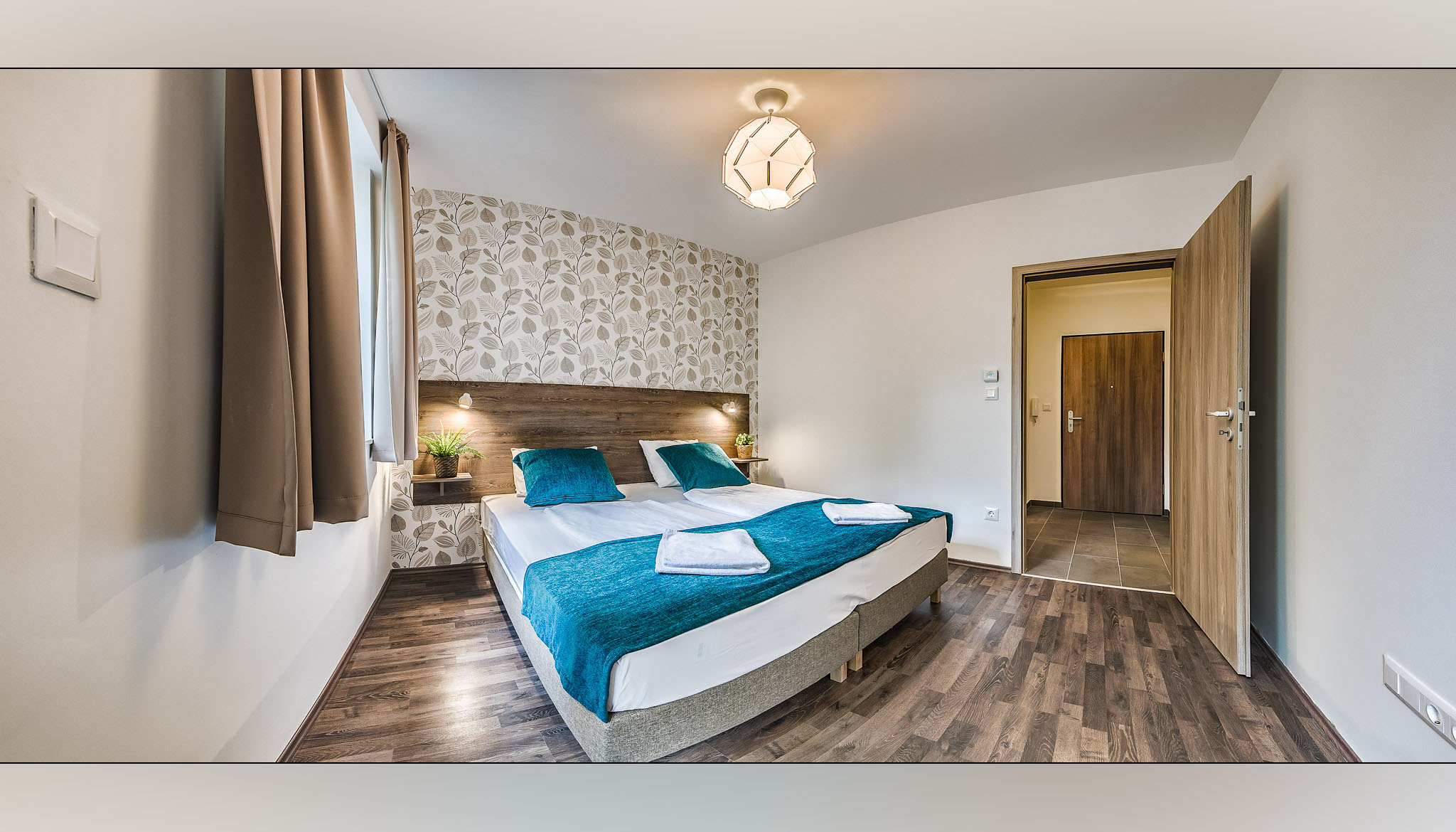
APARTMAN 1
48 nm-es apartmanjaink
tökéletes választás
az egynapos turisták, családok,
vagy üzleti ügyben átutazók részére…
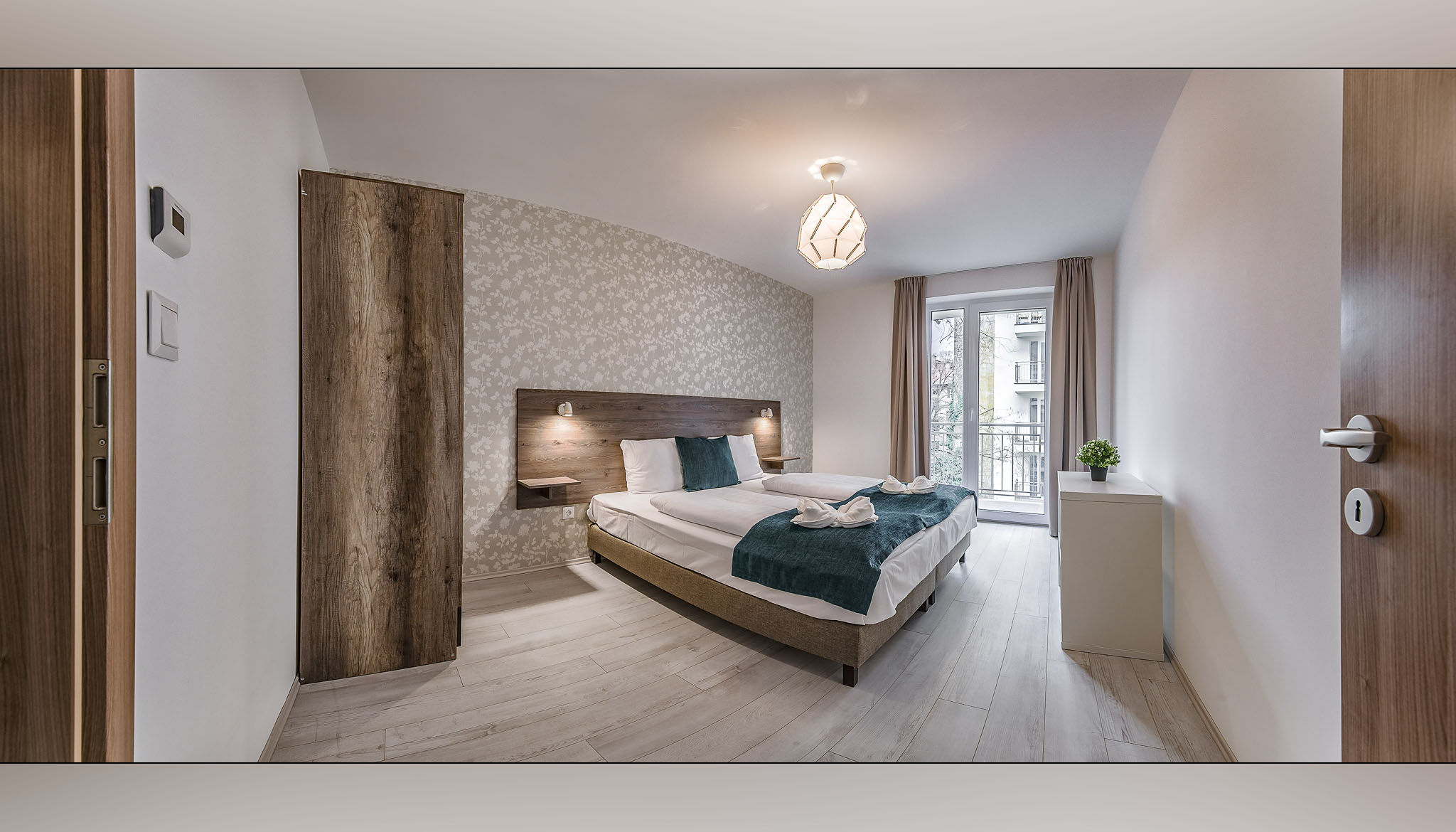
APARTMAN 2
73 nm-es apartmanjaink
ideális választás
5-6 fős családok, baráti társaságok számára…
